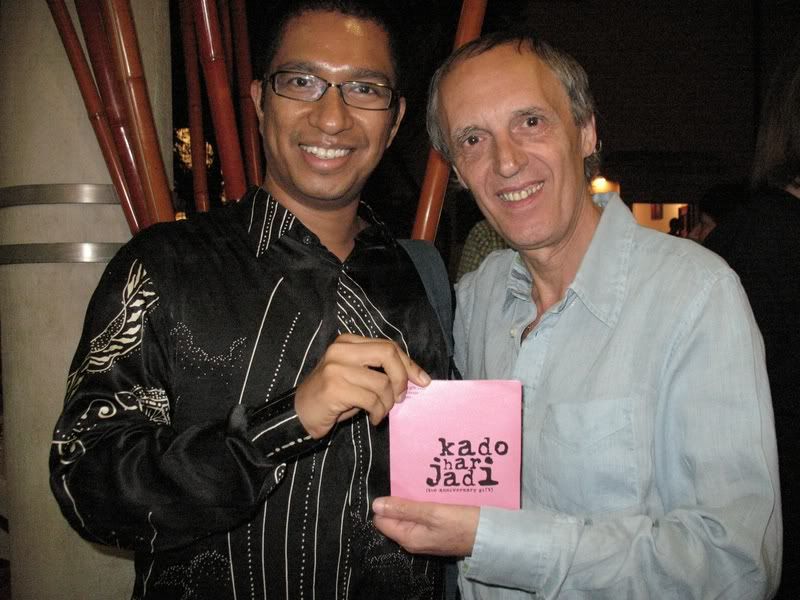ISLAM EMBEDDED: The Historical Development of the Pan-Malaysian Islamic Party PAS 1951-2003 by Farish A. Noor (MSRI, 2004, 840 pages, two volumes)You can’t attend the Inul concert, so stay at home and read this gripping book on PAS instead.
It’s true that if parliamentary seats are the sole measure, PAS is no longer the nation’s biggest Opposition party. But recent rumblings remind us that it’s still a force to be reckoned with. So ignore it at your peril!
When PAS started out, there was not enough money even for a typewriter. But now it is very much a part of Malaysian life. Even its new headquarters are smack in the KL city centre, a turban’s throw from the red-light district – an indication that the sacred and the profane can indeed mix.
What’s the secret of its success? To put it crudely, some members would be willing to die for the party; this is more than you can say for any other political organisation, unless we can find an Umno member who really, really loves his APs.
This great loyalty comes, of course, from the equation or equivalence of PAS with everything Islamic. Although its leaders would cringe at such a secular-capitalist concept, PAS has successfully
branded itself, at least to some, as the repository of religious virtues.
To its enemies, PAS is a bunch of raving, backward, bearded lunatics (and those are just the women). To its loyalists, the party has been following a fixed and unwavering path to divine glory through the profane means of national political struggle.
The truth, as demonstrated in
Islam Embedded, is more complex. And this is good for us, the reader. An 840-page tome on a political party that seeks merely to glorify or denounce would be a tough read. What we get, instead, is a colourful chronological account of the party and the nation, with instructive parallels to similar movements in other countries.
And what a rich, Dickensian cast of characters! People from all political stripes helped or hindered the journey of PAS over the decades, and they are given ample space. These include past leaders Burhanuddin al-Helmy (the book’s ‘hero’ for his progressive, non-dogmatic ability to accommodate differences when it came to building alliances) and Asri Muda (reactionary, ethnocentric, not a good egg).
The full scope of modern Malaysian history is refracted through the events and personalities of PAS – which, we learn pretty quick, was never a monolithic, static entity but a dynamic force composed of sometimes wildly disparate individuals. You get to hear of Konfrontasi, Khomeini, Memali and Reformasi – and those are just some words that end in ‘i.’
It’s quite an adventure, as the internal and external conflicts of the party create nail-biting suspense: Who’s going to win? It’s not for nothing that the informal milestones in this book are the General Elections, all of which come with tables and statistics.
This book is quite moving. Not for any florid melodrama, but for its generosity of spirit. One of our top public intellectuals, Farish A. Noor is not a PAS member but a nattily-dressed secular democrat. The fact that he can ‘see’ Malaysian history through the eyes of this party just proves how rarely the rest of us dare to venture outside our own comfort zones.
He can readily denounce ethnocentricism and religious chauvinism where he sees them, but he also admires the party’s success at sustaining a movement that exists beyond the mainstream of comfortably received ideas.
It’s a pity that not many people have read this book, for I think it’s Farish’s best piece of writing. You know him as a vociferous polemicist, whose prolific missives on current affairs often have a tone of eloquent exasperation. This book is more patient and expansive. It allows him to develop themes and follow trajectories at graceful ease. Some of the footnotes take up most of the page, and these are often wonderful pen-sketches of personalities and organizations, some of whom were only of glancing relevance to the main PAS story.
The two-volume hardcover retails at RM360, which puts it out of the reach of petrol-conscious Malaysians. An updated paperback including this Islamic party’s most recent history would make an ideal Christmas present, if you’ll forgive the inter-faith suggestion.
Meanwhile, the current incarnation is available in selected places such as
Silverfish Books.
(
Malay Mail, 30 July 2008)




